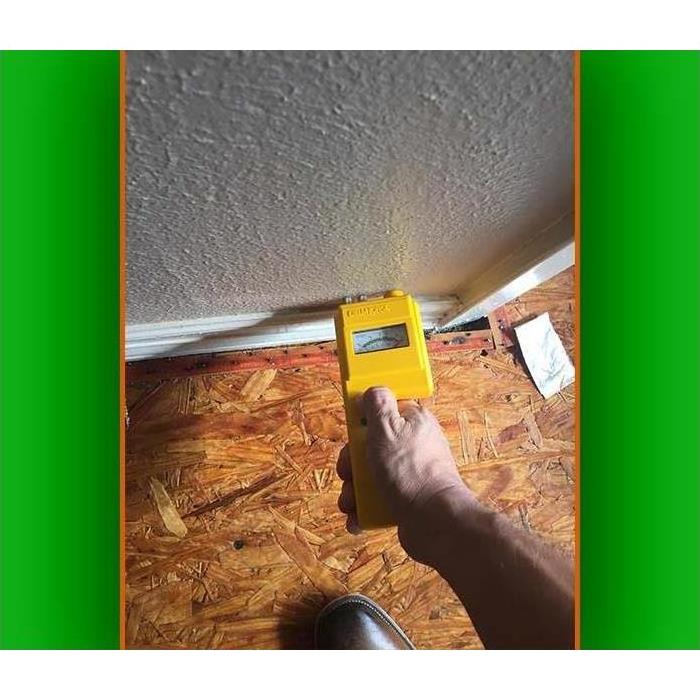How to Tell if Your Walls are Wet?
3/7/2020 (Permalink)
SERVPRO uses the right equipment to identify affected materials. SERVPRO will check for the source of moisture in your home or business.
Gypsum, aka “drywall,” is a very popular material for use in the construction of homes and offices. The material is noted for its strong fire-resistant qualities. However, drywall is also known to be incredibly susceptible to being damaged by moisture compared to many other building materials.
This is, in part, because drywall is extremely porous, readily absorbing moisture and retaining it. If the moisture content (%MC) of drywall exceeds even 1%, then the drywall can be considered “moisture-compromised” and in need of either drying or removal depending on whether or not mold has begun to grow.
Even greenboard, the “water-resistant” drywall, will be damaged by moisture if it gets past the green, water-resistant paper covering that gives greenboard its name. The majority of greenboard’s water resistance comes from the paper covering, not the drywall itself.
Because of how susceptible drywall is to becoming damaged by even minute amounts of moisture, it’s important to be able to accurately assess the amount of water present in drywall.
When looking for a moisture meter to use for testing drywall, some considerations include:
- Whether or not the meter has a gypsum scale.
- The range at which the meter detects moisture—the meter should be able to accurately detect very small amounts of moisture.
- Length of the pins.
- Additional scales for other materials—most professionals have to work with more than just drywall, so having a moisture meter with the ability to test other materials using different reading scales is a must.
In many cases, if there is significant moisture in a gypsum board, then there will be obvious external signs of it. For example, a simple visual inspection can be made to spot discolored or visibly crumbling drywall, or a musty odor can indicate a problem with mold growth.






 24/7 Emergency Service
24/7 Emergency Service